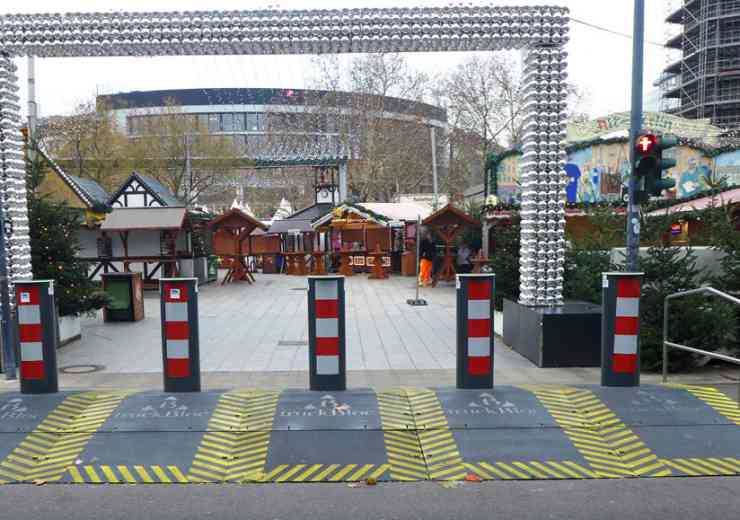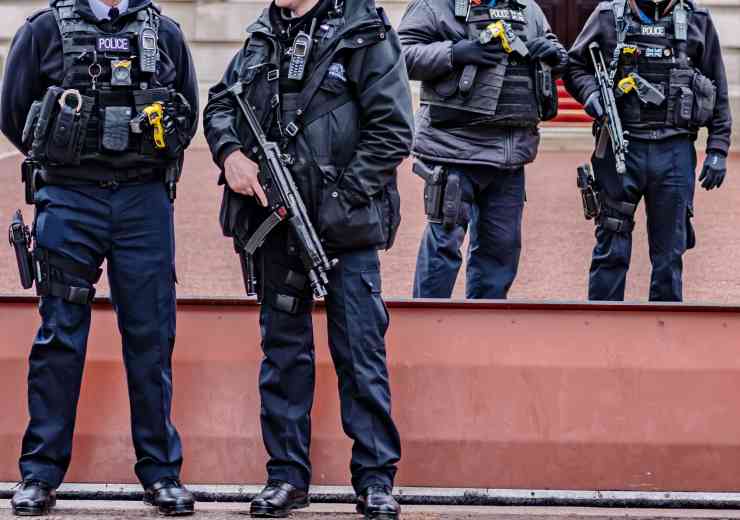Designing for counter terrorism
 The UK threat level has fluctuated for some years now between ‘critical’, ‘severe’ and ‘substantial’, the three highest levels of threat, so it is apparent that we are still very much at risk from attack by international terrorist groups.
The UK threat level has fluctuated for some years now between ‘critical’, ‘severe’ and ‘substantial’, the three highest levels of threat, so it is apparent that we are still very much at risk from attack by international terrorist groups.
Understanding the threat level is key when determining the ‘risk’ to a facility. Risk is defined as a function of probability and resulting consequences of an attack. However, threat levels do change so when determining a protective strategy the future variability of the threat level must be considered at the outset.
Recent Progress
Over the past few years much has been done to protect against terrorist attack. New security organisations have been put in place by HM Government, much good guidance issued and best practice published, and many high risk sites are now better protected. In this latter context protecting crowded places (including transport hubs, shopping centres, exhibition and convention centres and sports arenas, etc.) together with high profile government, public and commercial sites, has been the focus of much attention.
The government has set up several key bodies to advise on anti-terrorist measures, two of which are the Centre for the Protection of National Infrastructure (CPNI) and the National Counter Terrorism Security Office (NaCTSO). Both provide essential guidance on protecting the UK’s most vulnerable and valuable sites and assets, enhancing the UK’s resilience to terrorist attack and generally raising awareness of the terrorist threat and how we can prepare for, and protect ourselves, in the event of an attack taking place.
Seeking authorative advice
Government guidance on counter-terrorism states: ‘as the level of risk varies, counter terrorism protective security measures should be proportionate to the risk of terrorist attack.’ The guidance also includes a definition of the different site risk levels. There are four in all – high, medium-high, medium and low. The two highest risk categories will be an immediate focus for Counter Terror Security Advisors (CTSAs) – a nationwide team of police security experts whose purpose is to advise on how to best protect against terrorist, and criminal, attacks.
Designing in Security
Anyone currently involved in commissioning, planning, designing and managing new developments or major redevelopments within the built environment should consider security requirements from the outset. There is considerable scope in the design and planning of facilities to include proven and effective protective security measures based on best practice guidance on bomb blast and hostile vehicle mitigation (HVM) available from CPNI. Fundamentally, a holistic approach is required that provides increased protection to life and assets by designing in proportionate security measures, whilst ensuring any facility remains visually attractive and functionally useable.
Measures do exist for reducing risk with particular relevance to mitigating potential consequences. However, the big question is, “how much should we do?” Ultimately this will require an assessment of investment compared with the resulting potential benefits. The term ‘proportionality’ continues to generate much debate. Another similar approach is to consider providing mitigation measures that reduce consequences to As Low As Reasonably Practical (ALARP). But this still requires consideration of cost/benefit in determining and implementing protective schemes.
Assessing what is required
Whilst local CTSAs provide an invaluable service, organisations whose sites are in the high or medium-high category may wish to employ the services of expert security consultants to fully evaluate the risks and provide detailed recommendations.
When undertaking a security review of this type a number of key factors and different threat scenarios need to be considered. These include car and truck bomb attack (Vehicle Borne Improvised Explosive Devices, static and dynamic), forced entry, covert/insider entry, firearms/ballistic attack and stand off weapons. Typical expertise required from the security consultant will include blast and structural engineering, knowledge of the different types of threat scenarios and perimeter protection options that involve the use of vehicle and pedestrian security barriers to manage access control and maintain stand-off distance.
Experts in this particular field can be found by contacting the relevant security and built environment trade bodies, organisations such as the Institution of Civil Engineers and the ADS Group. Supplier organisations including Tata Steel also have considerable expertise in this field and can provide a comprehensive security consultancy service.
Security that blends with the environment
Aesthetic considerations now play a major part in the selection of appropriate security measures. A scheme, just recently completed, that delivered the very best in robust hostile vehicle mitigation measures in a way that was sympathetic to the local landscape and consistent with the local architecture, was the Whitehall Streetscape Project undertaken by Westminster City Council in partnership with The Cabinet Office. Measures to protect from hostile vehicle attack consisted of high performance bollards and Portland stone clad steel framed walls, both balustrade and solid. Although both have the appearance of the traditional bollards and stone walls that predominate in this part of the city, the bollard systems and the stone clad steel wall frames were provided by Tata Steel, having been fully tested to withstand an attack by a hostile vehicle.
Securing our future
There is now an increased awareness of the need to incorporate appropriate anti-terrorist measures into higher risk buildings and sites with high levels of pedestrian traffic. There is also now considerable expertise available both from relevant government organisations, industry bodies, the design community and suppliers of blast protection and physical security equipment. The terrorist threat will be with us for some time to come and those responsible for future development of the built environment (including developers, designers and end-user occupiers) must continue to embrace the need to build in security at the earliest possible stage in order to protect people and critical infrastructure from attack.
For more information
www.cpni.gov.uk
www.nactso.gov.uk
www.dft.gov.uk
www.pssasecurity.org
www.tatasteelsecurity.com
digital issue




















